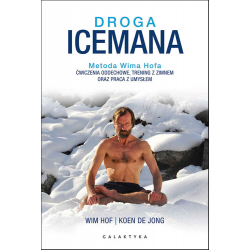-
Akupunktura

-
Moksoterapia
 Moksoterapia WszystkieProducenci
Moksoterapia WszystkieProducenci -
Bańki

-
Masaż

-
Fizjoterapia
 Fizjoterapia WszystkieProducenci
Fizjoterapia WszystkieProducenci- Oleje, maści, woski
- Suche igłowanie
- Kinesiotaping
- Pinopresura
- Piny, pinokaty i klawiki
- Akcesoria do pinopresury
- Aplikatory wieloigłowe
- Maty akupresurowe
- Aplikatory Lyapko
- Akcesoria do fizjoterapii
- Masażery
- Rollery do masażu
- Piłki do masażu
- Taśmy i gumy
- Modele i plansze
- Urządzenia elektroniczne
- Elektropunktura
- Laseroterapia
- Fizjoterapia weterynaryjna
-
Elektroterapia
 Elektroterapia WszystkieProducenci
Elektroterapia WszystkieProducenci -
Kosmetologia
 Kosmetologia WszystkieProducenci
Kosmetologia WszystkieProducenci- Olejki i kosmetyki naturalne
- Olejki do masażu
- Pielęgnacja twarzy
- Pielęgnacja włosów
- Pielęgnacja ciała
- Bańki kosmetyczne
- Bańki do twarzy
- Bańki do ciała
- Rollery do twarzy
- Gua Sha twarzy
- Igły kosmetyczne
- Tejpy kosmetologiczne
- Akcesoria do pielęgnacji
- Książki i modele kosmetologiczne
- E-kursy masażu twarzy
-
Inne terapie
 Inne terapie WszystkieProducenci
Inne terapie WszystkieProducenci- Aromaterapia
- Dyfuzory i nebulizatory
- Olejki eteryczne
- Kadzidełka
- Hirudoterapia
- Pediatria
- Bańki dla dzieci
- Shonishin, Tui-Na i masażery
- Syropy wzmacniające
- Książki tematyczne
- Weterynaria
- Akupunktura weterynaryjna
- Taping weterynaryjny
- Książki i modele weterynaryjne
- Świecowanie
- Su Dżok
- Magnetoterapia
- Igła Kwiat Śliwy
-
Suplementy

-
Zioła

-
Nauka

-
Do gabinetu
 Do gabinetu Wszystkie
Do gabinetu Wszystkie
- Obecnie brak na stanie
Shonishin. The Art of Non-Invasive Paediatric Acupuncture.
Autor: Wernicke Thomas
Wydawnictwo: Singing Dragon
Rok wydania: 2014
Liczba stron: 288
Oprawa: Miękka
Format: 180 x 253
Thomas Wernicke's authoritative book is one of the first resources in English on Shonishin, a non-invasive form of acupuncture developed specifically to respond to the needs of children. With its safe, quick and effective treatments, Shonishin is increasingly catching the attention of therapists world-wide.
Covering the history, theory and clinical practice, Wernicke explores how Shonishin is used with young children, from babies and toddlers to school-age children, to treat a range of behavioural issues and physical conditions such as KISS syndrome, allergies and asthma. He also examines how the techniques can be adapted for use with adults and older people to provide an alternative, non-invasive treatment. With access to downloadable handouts that can be used with patients, and international case studies that demonstrate its effectiveness, his book provides a complete and practical handbook on Shonishin for existing practitioners. Written in an accessible style, it will also be of value to any therapist interested in learning more about the treatment, including practitioners of Chinese and Japanese medicine, traditional acupuncture and shiatsu, craniosacral and occupational therapists, and physiotherapists.
Opis
- Tematyka
- Akupunktura
Zdrowie dziecka - Język
- Angielski
Chwilowo nie możesz polubić tej opinii
Zgłoś komentarz
Zgłoszenie wysłane
Twoje zgłoszenie nie może zostać wysłane
Dodaj opinię
Recenzja została wysłana
Twoja recenzja nie może być wysłana
16 innych produktów w tej samej kategorii:
Samodzielne usuwanie bólu
Masaż rolujący powięzi
Droga Icemana
Sztuka stawiania baniek
Co nas nie zabije
Współczesna Terapia Bańkowa
Zmysły. Medycyna holistyczna - Tom X
Sztuka odmładzania i długowieczności








































